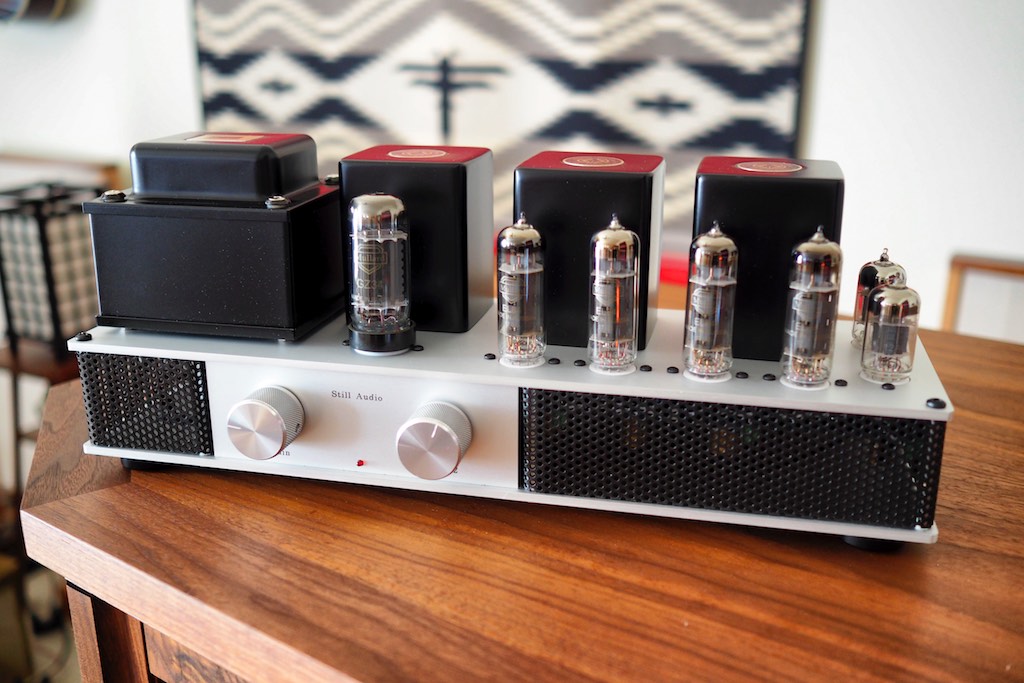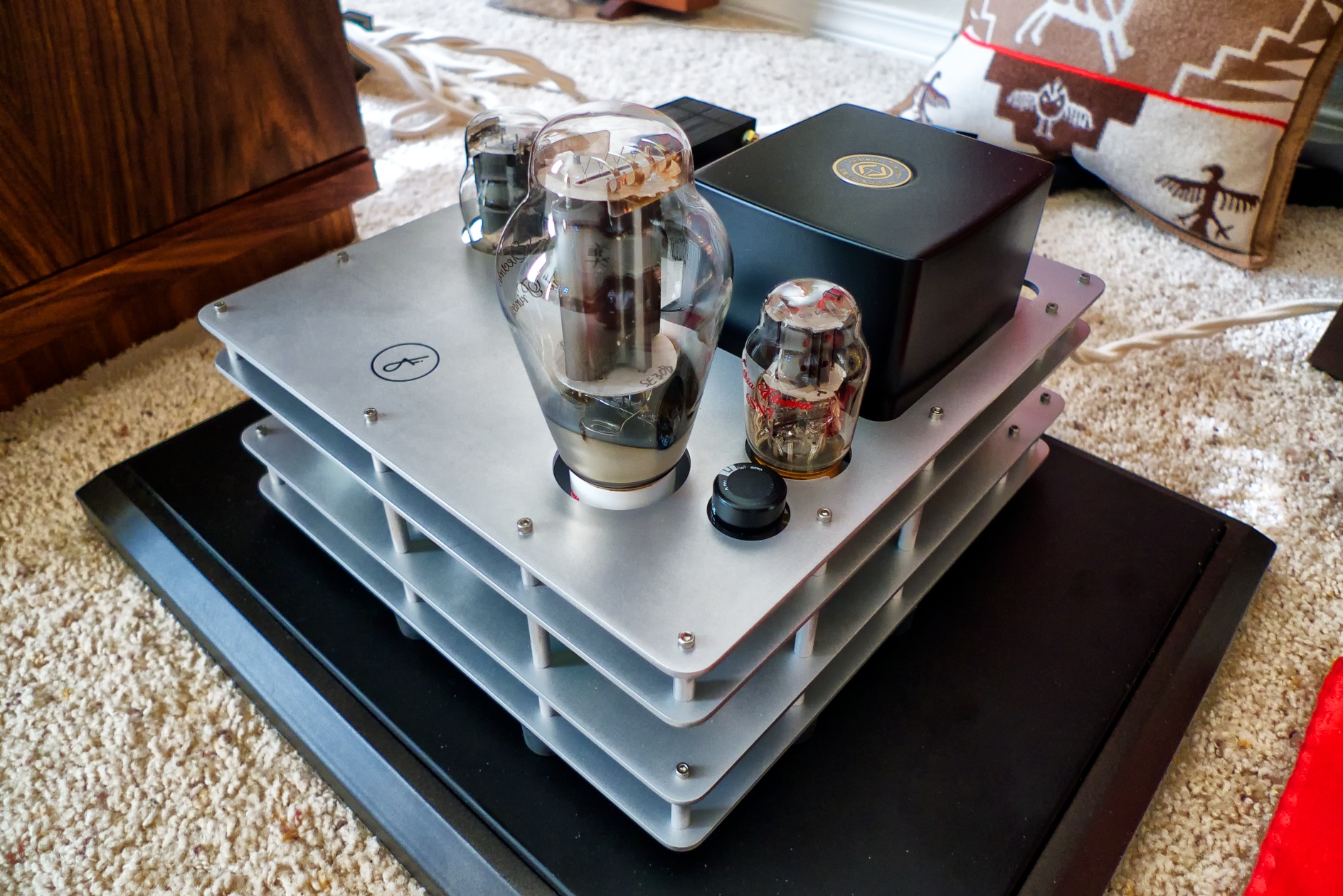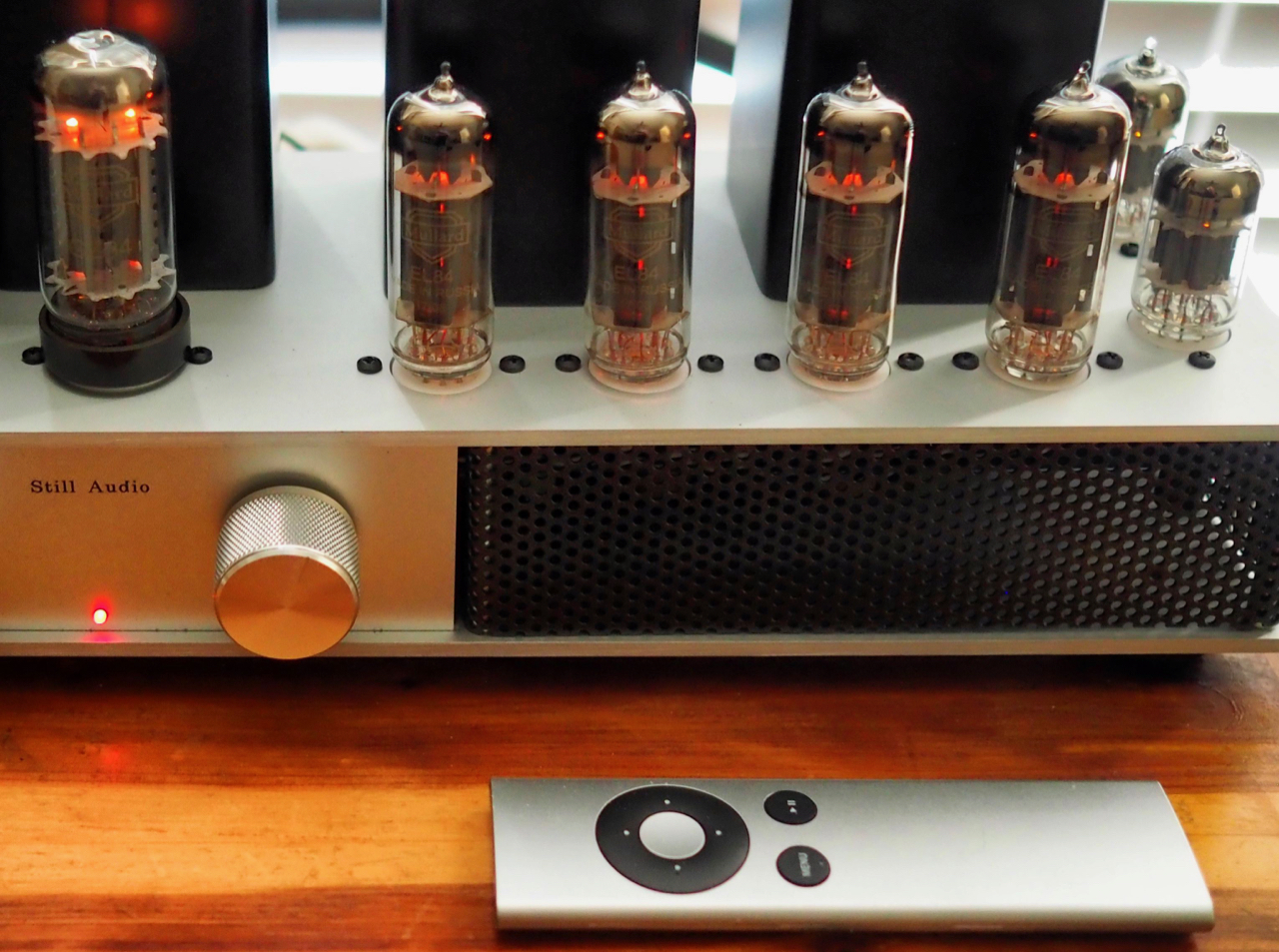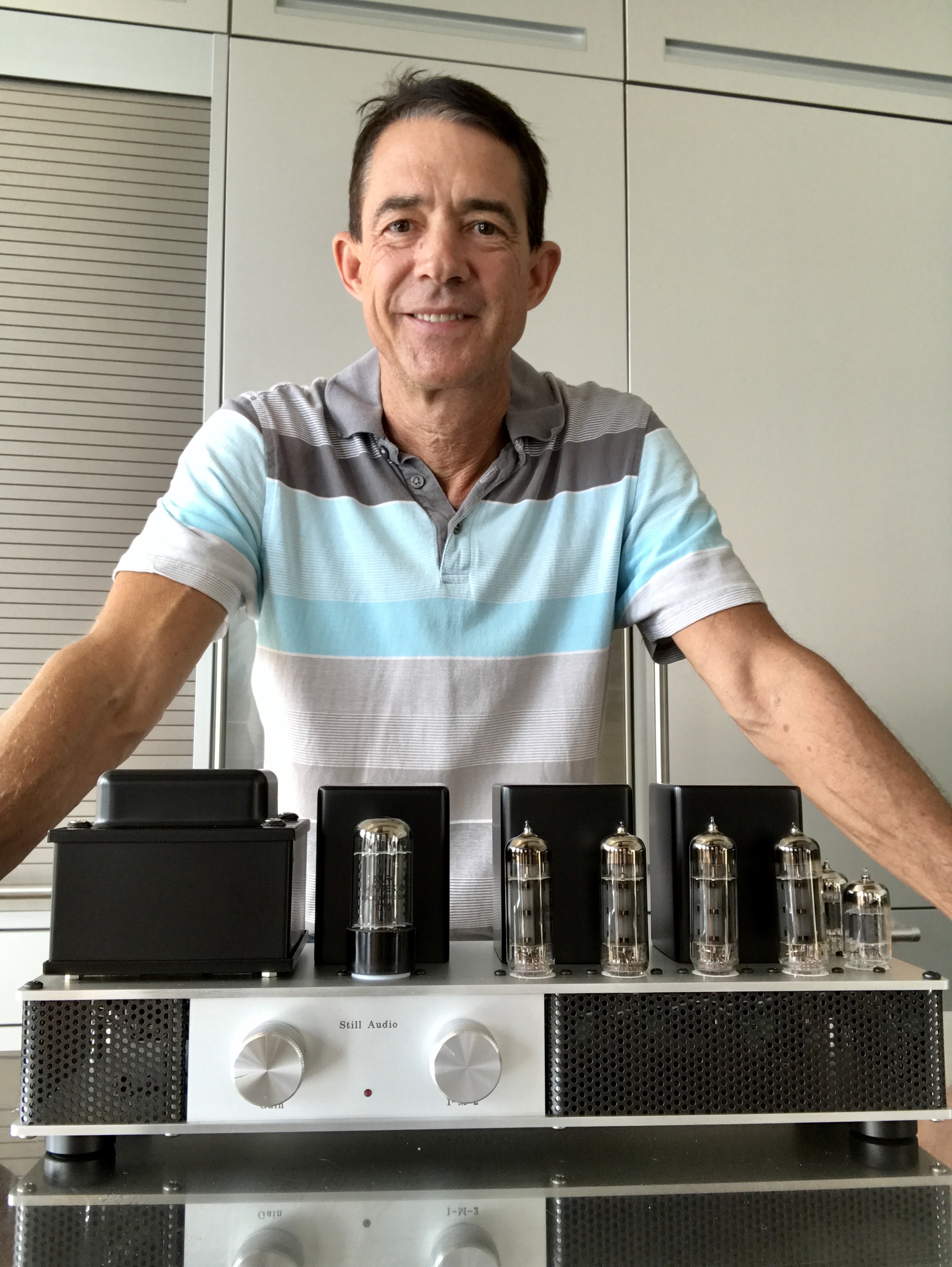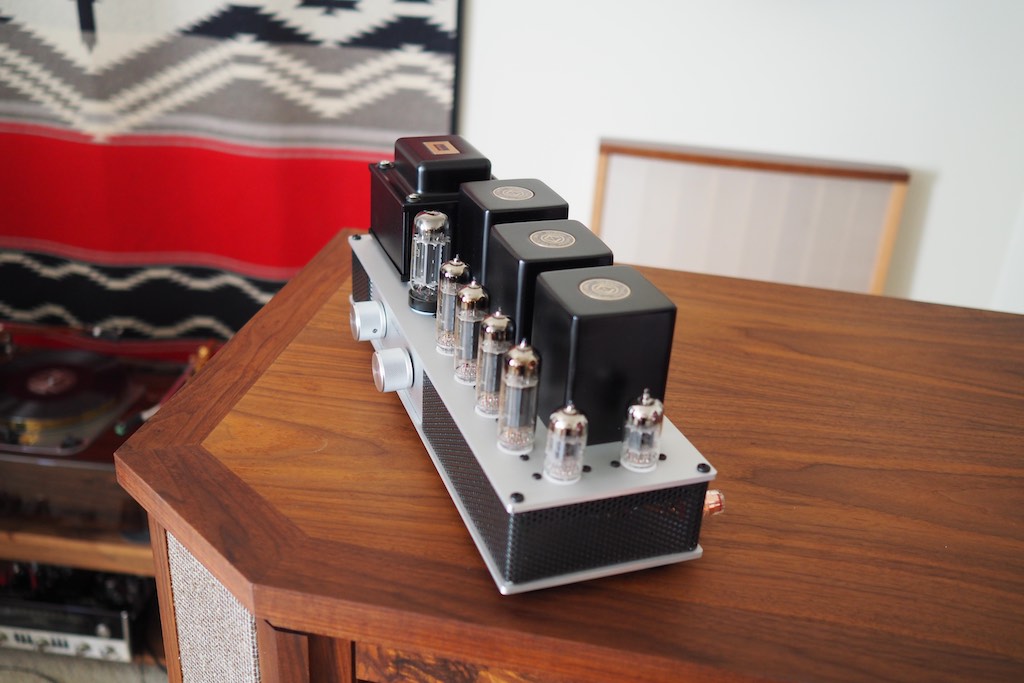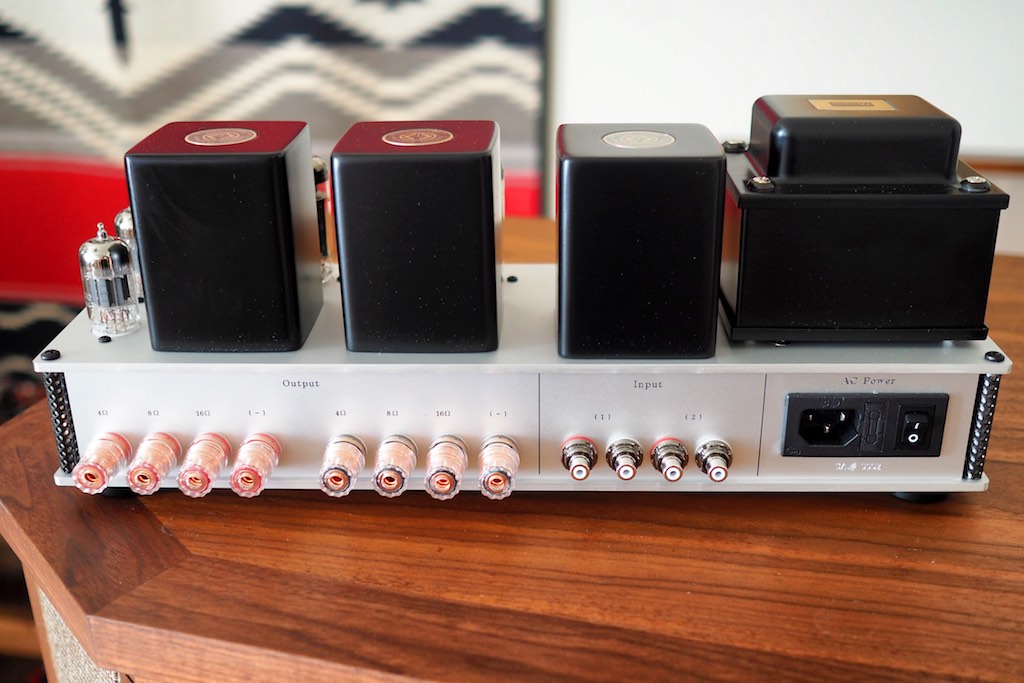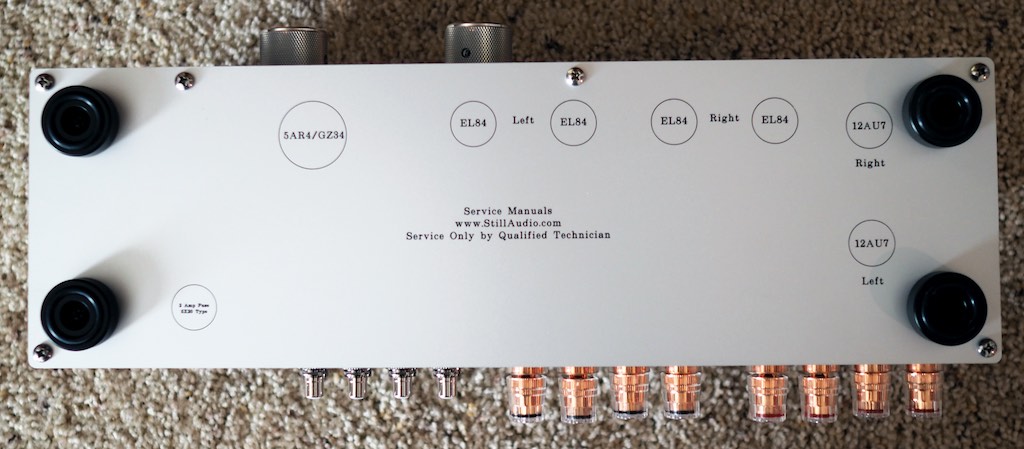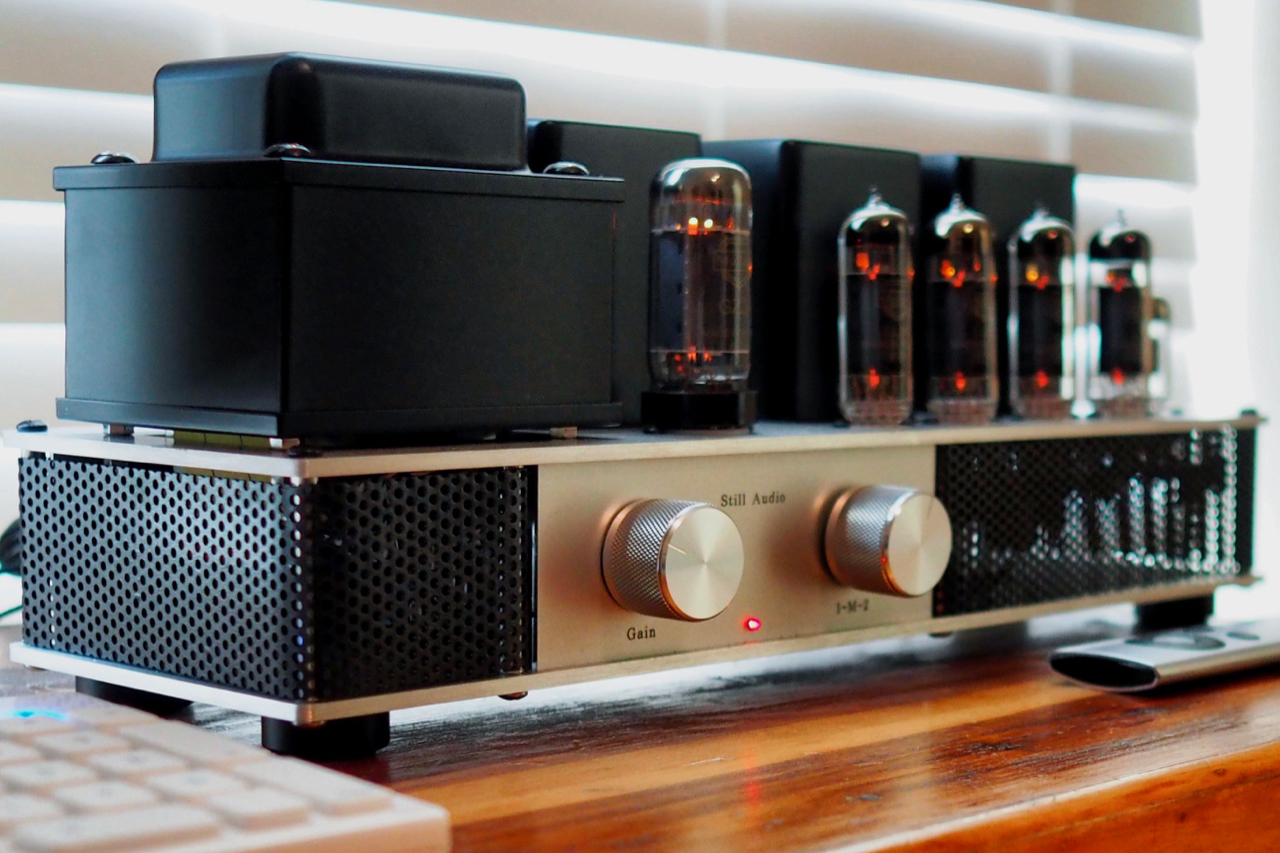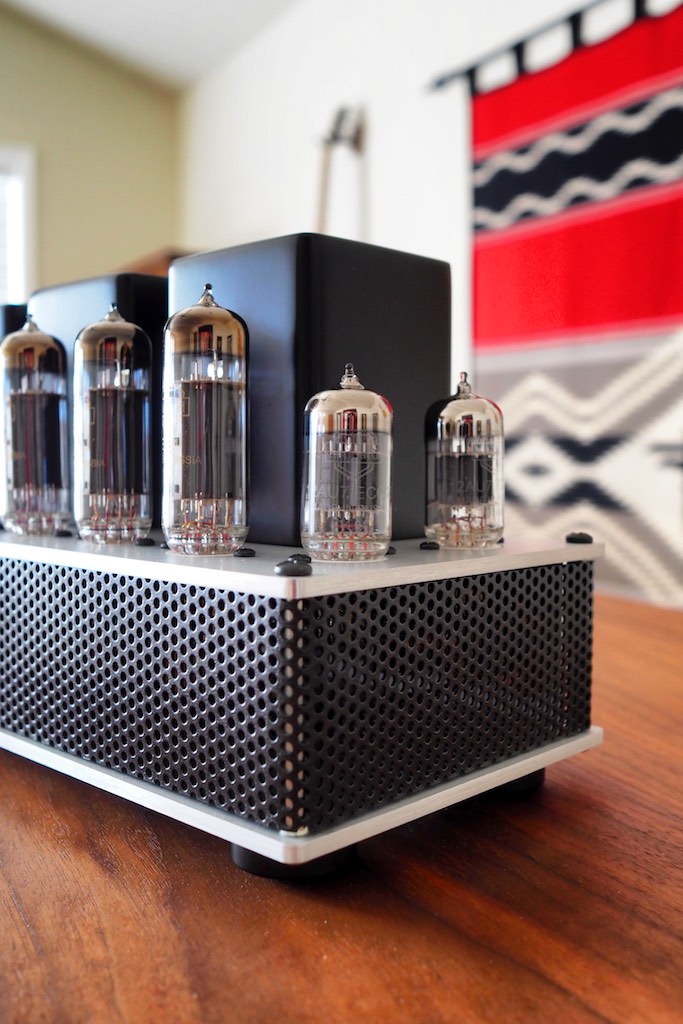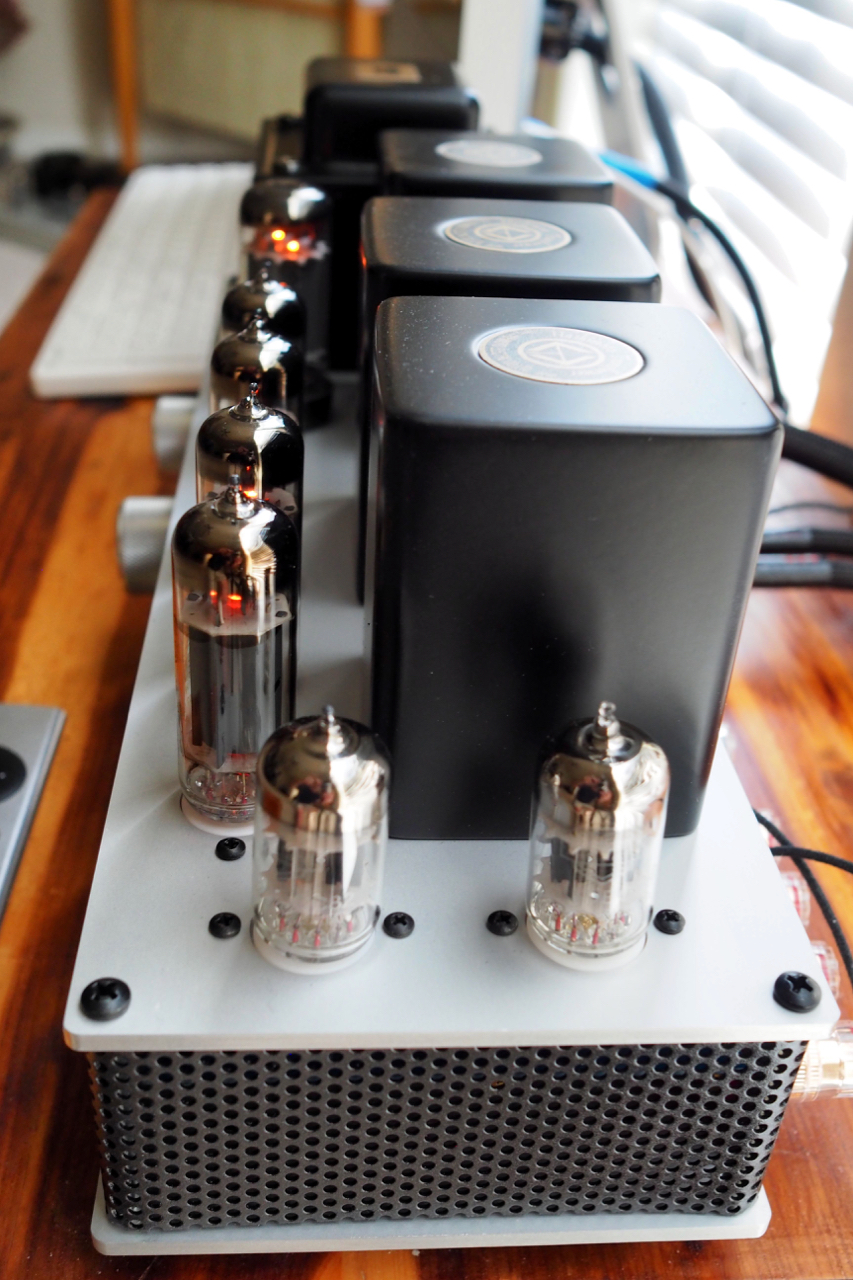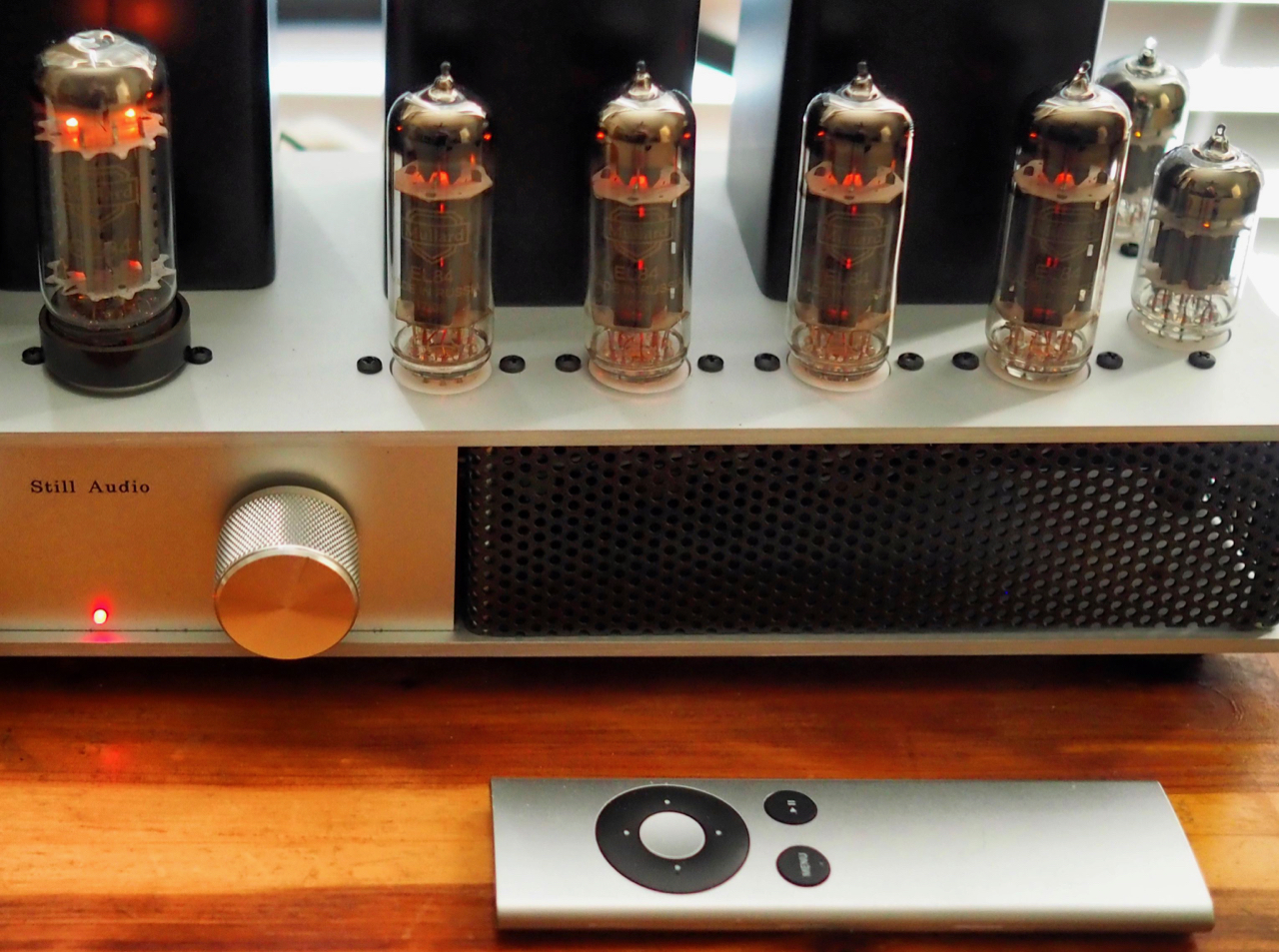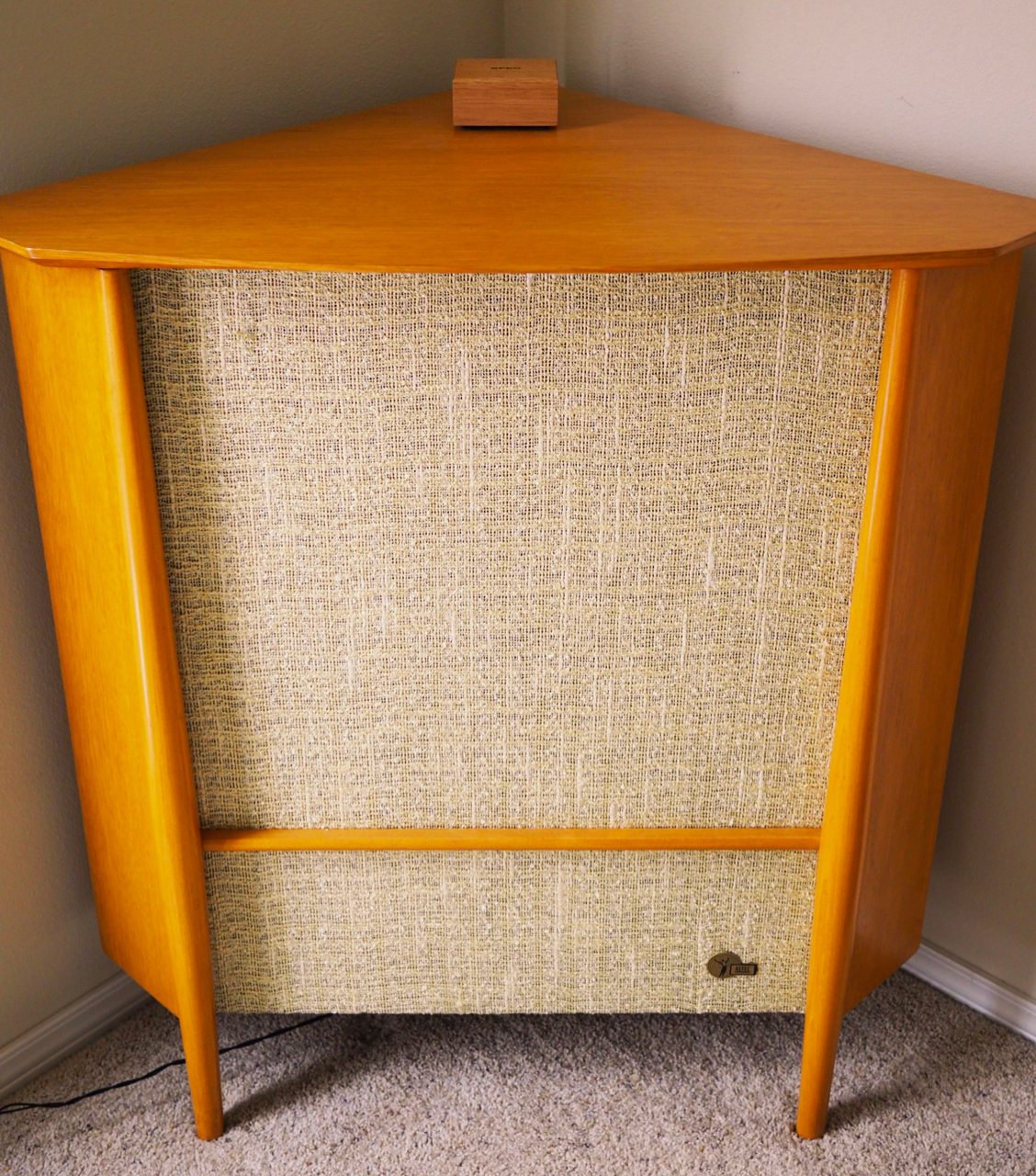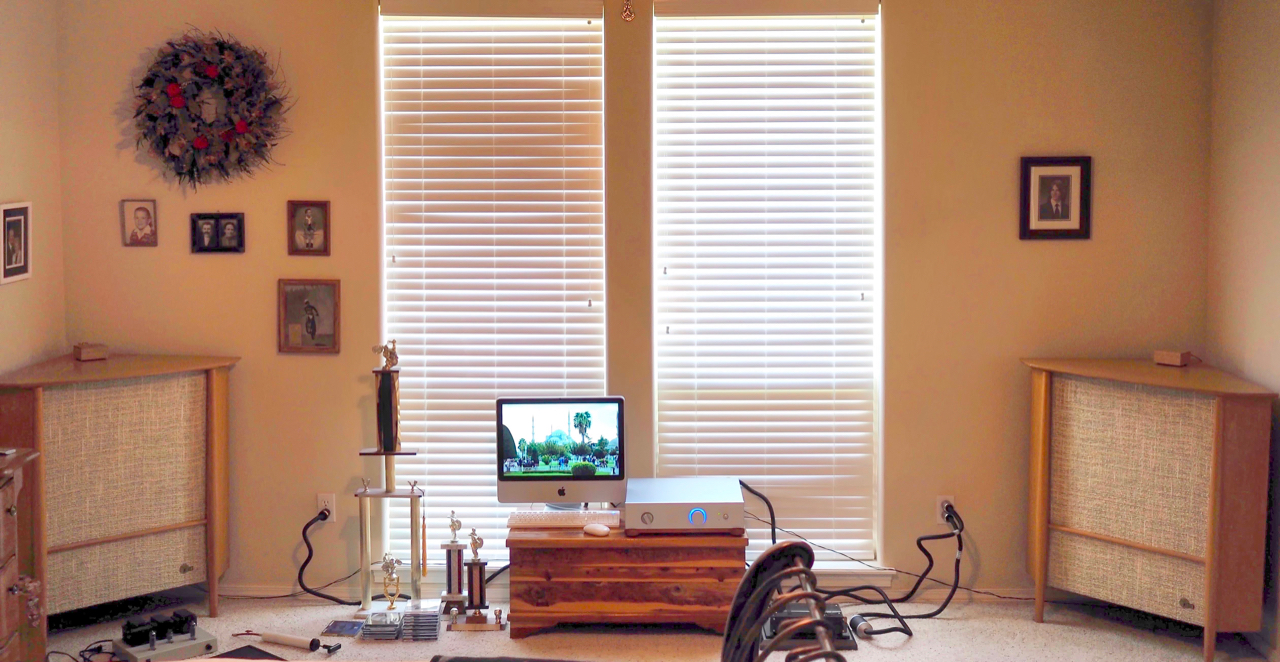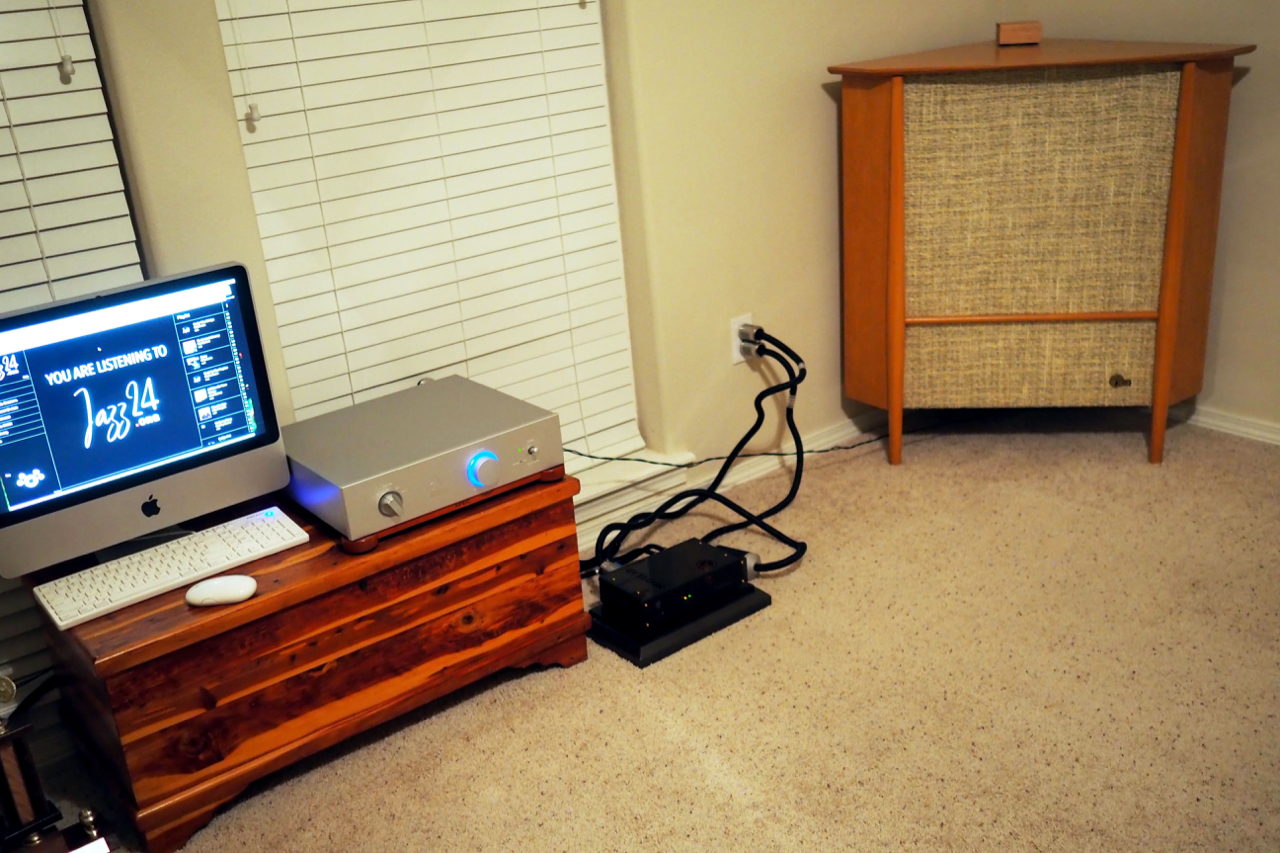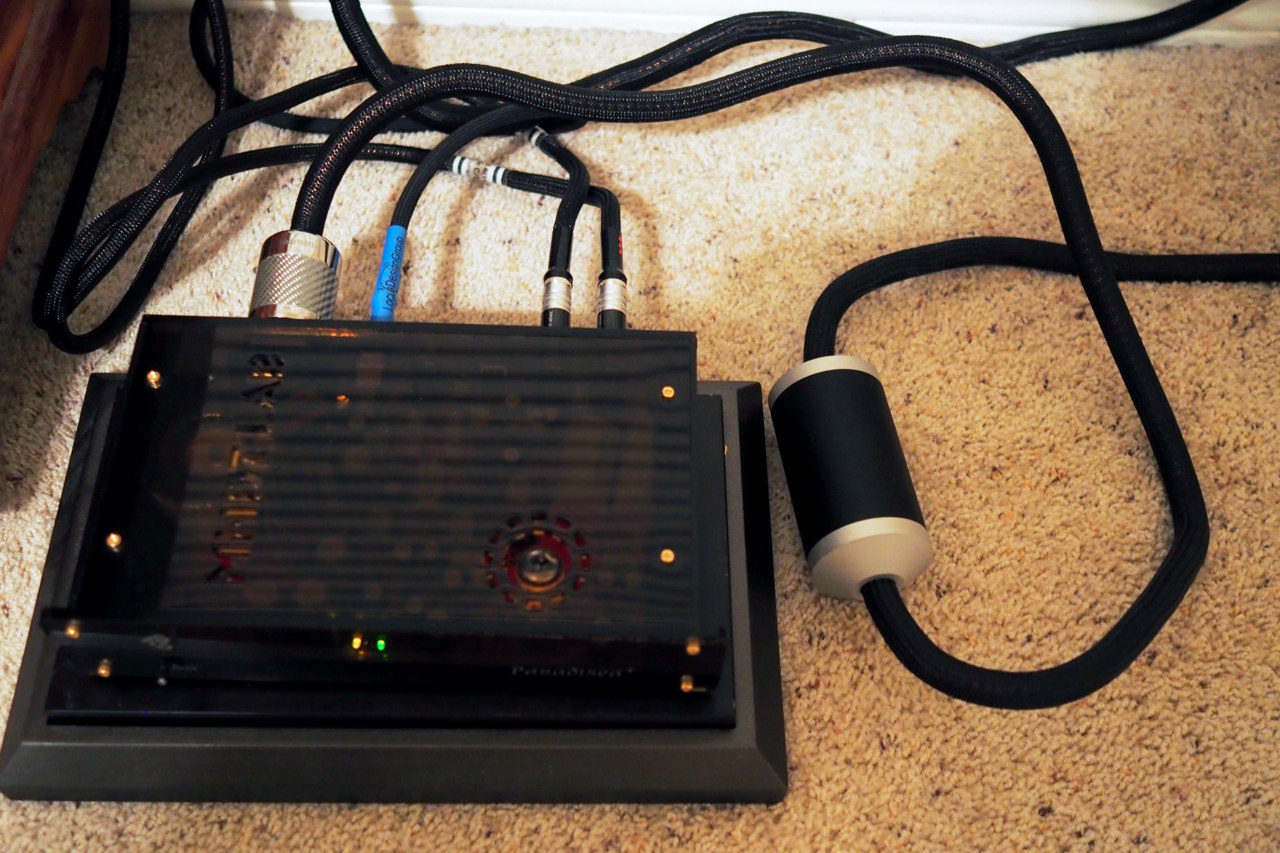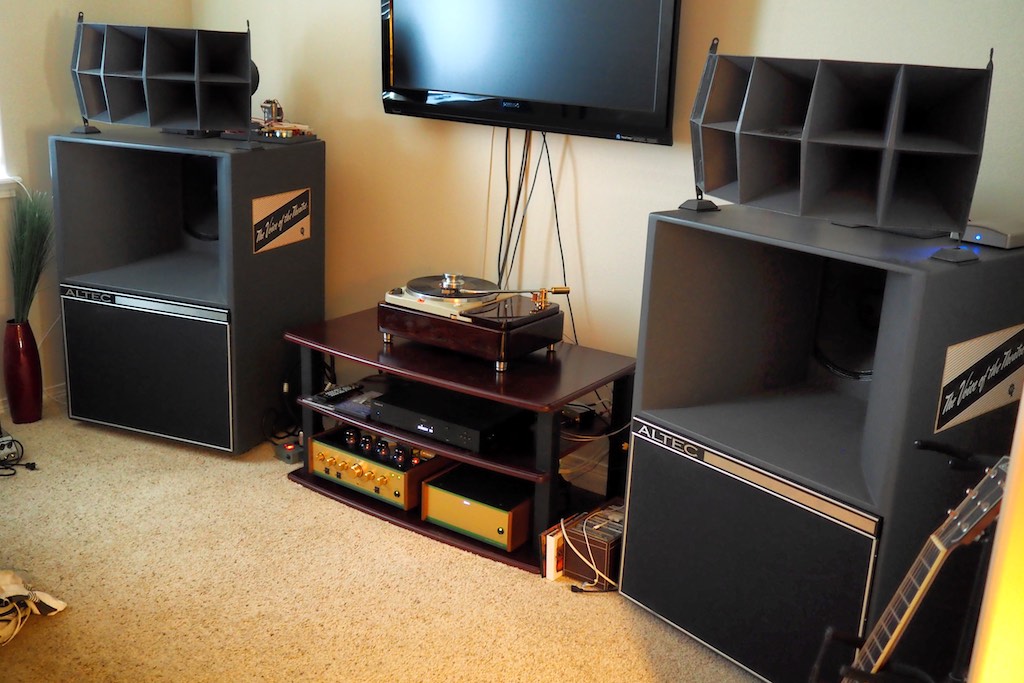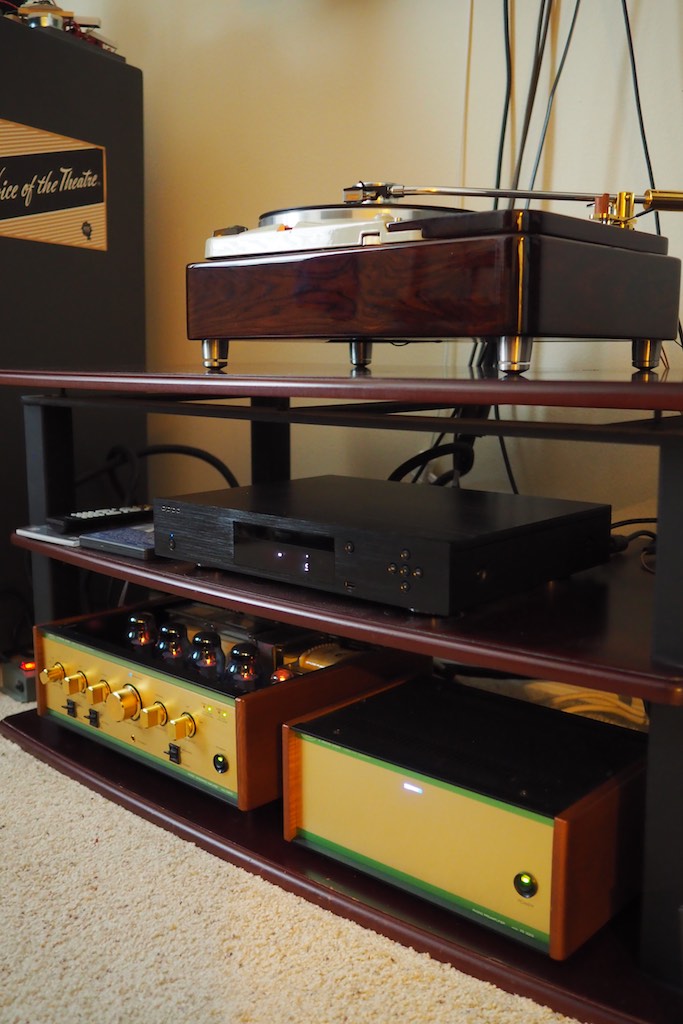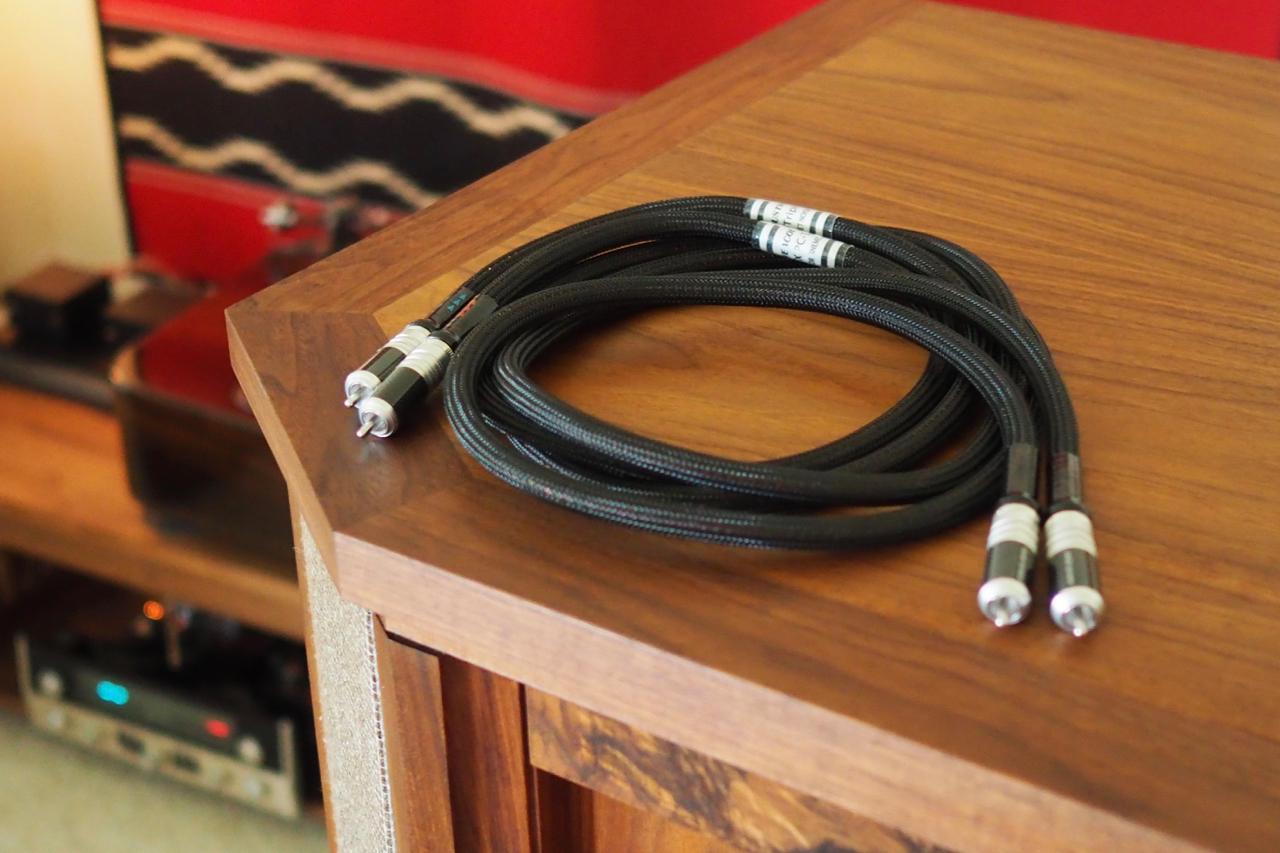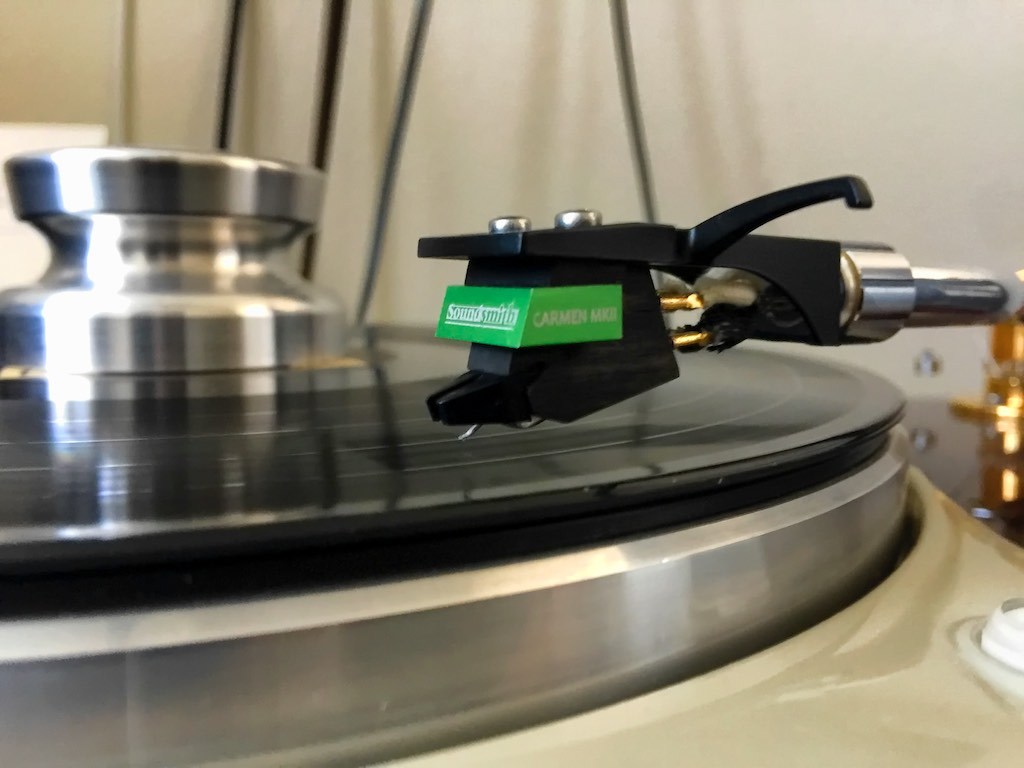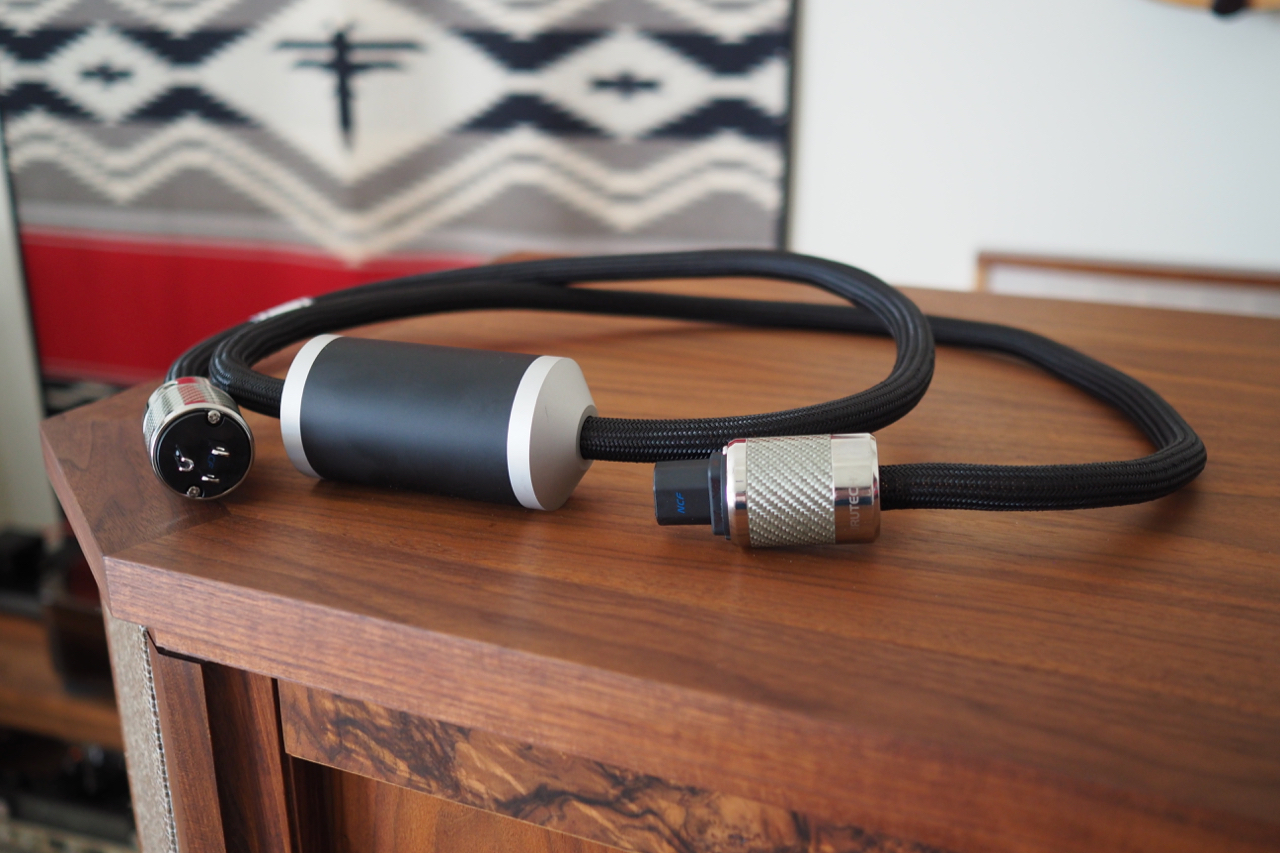I'm in the last stages of finishing up my review of the Still Audio EL84 integrated amplifier for Positive Feedback. As is my custom I thought I'd give you a sneak peek into the review before it is published at Positive Feedback, and I hope you enjoy it!
This is a very special little amplifier and I have greatly enjoyed spending some time with it and writing about it.
¸¸.•*¨*•♫♪ ¸¸.•*¨*•♫♪ ¸¸.•*¨*•♫♪
Still Audio EL84 Integrated Amplifier: Affordable Handcrafted Exotica!
When Mark Still contacted me in June about reviewing his handcrafted Still Audio EL84 integrated amplifier (below) I was immediately intrigued, particularly when Mark urged me to give it a try with my pair of vintage Altec 832A Corona loudspeakers, whose visceral musicality I adore.
I was impressed with Mark’s chassis design for his Still Audio EL84 integrated amplifier, which evokes Don Garber’s artful Fi chassis designs that I have admired so much over the years (below).
Then there’s the EL84 vacuum tubes in the Still Audio EL84 integrated amplifier, which are one of my favorite tubes for audio, being full of vibrancy, color, and articulation that makes recorded music come alive in an exciting and life-like way, and it doesn’t hurt a thing that EL84s are one of the most affordable high-performance vacuum tubes when it comes time for refreshing them!
I’ve always enjoyed EL84 amplifiers, and a well-designed, high-quality, high-performance EL84 amplifier – like the Still Audio EL84 integrated amplifier – provides a great balance of musicality and audiophile-style sonic performance that is hard to beat at any price, but in this case it’s an affordable $2895 USD.
Mark Still of Still Audio
It’s become my custom for Positive Feedback articles to introduce you to the designer behind the audio component under review with a bio overview, in this case Mark Still of Still Audio, because I think that gives you a glimpse into the person who has such a great passion for music and audio that it has led them into the realm of designing components for your enjoyment, and how their personal background and unique talents & insights informs their audio designs.
It just so happens that there is an excellent bio of Mark on the Still Audio website, so rather than write a new one from scratch like I usually do, Mark has been gracious in letting me borrow from what’s written there for you.
“When Mark was six years old, his Grandmother would take him to thrift stores to buy record players by the dozen. He would take them home and begin assessing what needed to be fixed or how to take parts from one and make them work on another. He then sold them to friends and family. Mark has always loved music, and as a young child liked to watch things work, like turntables going around, and the tubes glowing.”
“Mark always had the best (and most complex) audio systems on the block. His friends would always ask, what does that component do, or how do you know how to hook all this stuff up? He also converted a lot of records to cassette for people using his equipment.”
I didn’t read Mark’s bio until I was writing this article, and it helped explain a number of things for me, like the fact that Mark is a musician, which goes a long way in explaining why Mark’s EL84 integrated amplifier sounds so musically natural and “right”. More about that later in the article.
“He played baritone in a brass marching band with his brother, then moved to the bass guitar, playing in various bands around town. He eventually started playing rhythm and then lead guitar. He maintained all his amplifiers and equipment himself, sometimes modifying them to create his own unique sound.”
“In high school, he had a recording studio and a 4-track tape machine where he recorded all the local bands and events, mastering them down to 2-track. Mark was in a band and eventually recorded an album that was cut to vinyl. At the same time, he was asked by one of the guitar teachers if he would tour with them as their sound and recording engineer. He spent that last summer in high school touring with that band. The guitarist was from the band Stephen Wolf.”
“Mark's family owned a machine shop, so engineering came natural to him and he has a passion for mechanical design and engineering.”
“At that point, Mark transitioned to testing, fixing and repairing computer boards from IBM and DELL at the dawn of the computer age. The money in computers was great but looking back he says he should have stayed with audio-based electronics.”
“Mark moved from the electronics side of computers to designing and writing software where he could release his creative side of design and engineering.”
“Feeling the passion, Mark got his recording certification from Oak Grove Recording with the renowned Joe Laquidara, who wrote and produced hit songs for the band Boston. Mark is now a certified recording engineer.”
“In 2010, Mark took a year off to rediscover his passion for audio and music. That year, he designed a single-ended amplifier that he took to Rocky Mountain Audio Fest, where it was received positively driving a pair of Rethm loudspeakers.”
“Once Mark did this, it unleashed his passion and desire to design, create, and build audio equipment that competes with the best equipment available today. His passion for quality and design work are unmatched. He says he is not done with a design until he has exhausted all other possibilities. Only then does he know he has the best design possible.”
“Mark is building and selling his equipment in very limited quantities out of his home electronics laboratory. It is exciting to see what Mark is creating today and in the future.”
“Each and every one of Mark's products are hand made one at a time using the best parts available today. Mark designs his products to last forever, considering every last detail before the final prototype is put into production.”
Certainly, Mark has all the personal attributes for making a stellar audio product, as he has a love for music and audio electronics, is a musician, understands engineering and industrial design, is a mastering engineer, has experience developing audio amplifier circuits, and has a passion for developing an innovative and quality product.
The Still Audio EL84 Integrated Amplifier
It’s really rather incredible how much goes into designing and developing an audio component like the Still Audio EL84 integrated amplifier.
There’s a lot involved from getting from the designer’s vision for an audio component to realizing a final product that will meet the needs and desires of its intended audience. There’re the technical skills needed in laying out a high-performance audio circuit, the informed choices of the components that make up that circuit, the artistry involved in voicing it both musically and sonically, and the crucial development of its industrial design that refines the component’s scope and performance, optimizes its features, appearance, and value, all in ways that benefits the customer and makes a statement for the designer.
I asked Mark about his design goals for the Still Audio EL84 integrated amplifier, and he told me:
“I started designing this amplifier in January 2017. I wanted to build an integrated type amp that would fit into spaces that most high-end amplifiers wouldn’t. I also wanted it to have a good amount of power, more than a typical SET amplifier could deliver. I wanted to create something that didn’t currently exist and could win an industrial design award. It had to be a work of art and it had to be very high quality.”
“The shape of the amp was of prime concern. I have always been a fan of amps that were long and thin like the Quad, some of the old Fisher’s, and others. That is where the initial shape idea came from. Some other aspects of the design were inspired by the late and great Don Garber. What a great designer, he will be missed!”
“Modern day systems don’t require a lot of inputs, and a good majority of modern systems only use two inputs for a DAC and a phono stage, so that’s what I did, and provided two inputs. I wanted to keep it simple and easy, and to fit today’s system’s needs. For outputs I chose to include 4 Ohm, 8 Ohm, and 16 Ohm outputs, because a lot of speakers favored by those with low-powered amplifiers are either 8 Ohm or 16 Ohm. There’s very few 4 Ohm loudspeakers out there, but I chose to offer all the modern speaker impedance options.”
I asked Mark to elaborate a little on his circuit design for the Still Audio EL 84 integrated amplifier:
“The input stage consists of a 12AU7 phase inverter. The 12AU7 was chosen because of its high current capabilities which can easily drive a pair of EL84’s to full output. Because of this it’s a great tube for phase inverter duties. The output stage consists of a pair of EL84 pentodes connected in ultra-linear (UL) mode to the output transformer, and no negative feedback is applied. This requires a very high-quality transformer, so Hashimoto transformers where chosen for the job. Each channel is idling at approximately 81mA, with each of the EL84’s cathode biased at 39mA and the 12AU7 at 3mA. This circuit can output 10 Watts in UL operation. While the EL84 is capable of 15-20 watts the distortion goes up significantly when UL operation is not used. I chose this mode because I wanted very low distortion. All of the tubes are running at or below spec, so vintage tubes can be used without worry of burning them up, and they all should last for a very long time.”
“The power supply uses a large 300mA transformer, into the 5AR4 rectifier tube that has output capability of 220+ mA into the choke that is capable of 300mA. From there each channel is split off into its own set of low ESR reservoir caps to supply each channel. I chose to use “banks” of smaller caps, 47uF or 56uF, rather than a very large single cap because they are capable of filling faster with each mains cycle. There are no resistors in the power supply for the output stage. Only one to drop the voltage and separate the phase inverter that also has its own reservoir cap. This gives the power supply very low impedance contributing to the amplifiers speed and agility. The power supply can supply both channels at full output and run at about 50% giving it a good amount of head room.”
“The splitter/driver stage is a paraphase type. I chose it because it is simple, straight forward, and works from 5k to 100k very well. I’m a big Magnavox fan and they used the paraphase in many of their designs. I know the benefits of fixed bias, and you know it’s not that hard to adjust, but people today tend to shy away from amps they have to “mess with”. A lot of audiophiles don’t want to mess with adjusting the bias every few months, which is why I went with cathode bias. Each tube has its own cathode resister, precision 1% Mills. The tubes are AC heated as I think that DC heating make the amp sound too dull.”
The excellent sonics and musicality of the Still Audio EL84 made me curious about the components Mark chose for it, so I asked Mark to tell me a little more about his component choices:
“I’ve always been a fan of Hashimoto transformers (which were also the favored choice of Don Garber – Jeff), and their frequency response charts are flat from 5Hz to over 100Hz, giving me a wide range to work with. My resistors of choice for this circuit are the Takman carbon film resistors, and they sounded better in my sound tests than the Kiwame and Amtrans resistors I tried. The bypass capacitors are Nichicon FG series (Fine Gold) audio caps and are fantastic caps for bypass caps. The coupling caps are Mundorf’s. They take a long time to break-in but have a very smooth sound with solid bass.”
“As far as tubes go, every tube type I tried sounded different. I think people should use the tubes that sound best to them for their audio system. Psvane tubes with jazz are super sweet sounding, while the Sovtek EL84M’s are great for rock and roll, for example. I chose the Mullard’s because they gave a nice balance that falls between the PSvane’s and Sovtek’s. Mullard was also smart in putting the labeling on the correct side of the tube. Most of the time pins 4-5 heaters are on the outside of the chassis, which puts the labeling in front for you to see. I wish other tube manufacturers would do the same.”
“The tube sockets are all PTFE with gold pins. The PTFE sockets hold the tube tighter, but they are softer than ceramic tubes sockets, so you have to be more careful not to scratch the PTFE with the tube pins when changing tubes. If they get scratched it won’t affect the sound or the tightness, just the esthetics.”
“For the prototype, I built it on 3 turret boards so I could change out parts easily, but the time and effort to build it that way was not cost effective. I was very pleased when I did the first printed circuit board (PCB), where I used extra thick solid copper traces. The PCB tightened up the sound, and took it in the direction of being quieter and deeper. I’m thinking with the turrets for each component the signal had to go from component to turret to wire to turret to the next component, and with the PCB it was just component to copper to component, through one piece of thick solid copper. There is still a lot of point to point wiring, and I used silver over copper with PTFE insulation everywhere except from the IEC to power transformer, where I used 14 AWG copper.”
I also asked Mark about his voicing strategy for his integrated amplifier:
“I wanted to voice the amp to sound like a new-style tube amplifier, more of a clean sound, but with that tube magic. I wanted it to have finesse while maintaining a calm sensibility and listenable quality about it. If an amplifier is too bright it will sound amazing at first, but it will eventually annoy the listener. I wanted the bass to go as low and flat as I could get it without compromising the rest of the audio band. I achieved an overall pleasurable listening experience, with great spatial image and a big wide and tall sound stage, so I feel I have succeeded in my voicing goals. As a reference I used a McIntosh MC275 power amplifier and C22 commemorative edition preamplifier. I have to say I’ve been pretty happy with the results.”
One of the features I love about the Still Audio EL84 integrated amplifier is the remote volume control, which is something I wish every integrated amplifier and preamplifier included.
“I designed my own remote-control system. I originally went out looking for one but could not find anything even close to my needs. I had to have a remote because I know people (including me) want that remote when the volume of this or that song needs to be just a little louder or quieter you can hit the button and get just what you want. It’s pretty nice at the end of a long day.”
“The remote is actually programmable to any remote but you would have to remove the bottom to push a small button on the remote board and watch the LED to program it. So easy though. Push the button, then push the volume up button 4 times until it flashes, then push the down button 4 times until it flashes and you’re done – it’s programmed to that remote. In the future I may put a hole in the bottom to allow the button to be pushed without removing the bottom.”
Review Systems
For this review of the Still Audio EL84 integrated amplifier, I used two different audio systems so I could get broader insights into its musical & sonic performance than just one system would provide.
The first system used for this review is built around my aforementioned vintage (circa 1957) Altec 832A Corona loudspeakers, which I am having a musicality love affair with.
I’m still in the process of figuring out what equipment rack to use for this system, so for the moment a vintage cedar chest was pressed into service to sit components on. The Corona’s are designed to be placed into room corners, thus their triangular shape, which makes it challenging to get them both in the photo in a wide room!
The Altec’s are equipped with Spec RSP-AZ9EX Real Sound Processors (impedance compensators), Duelund DCA16GA tinned-copper speaker cables, the SPEC RSA-M3 EX Real Sound Amplifier, which is connected to wall AC with an Acoustic Revive Power Reference TripleC NCF AC power cord, and with Acoustic Revive RCA Absolute FM Interconnects (in for review) connecting it to a Mhdt Paradisea+ USB DAC.
The Mhdt Paradisea+ USB DAC is connected to wall AC with an Acoustic Revive Absolute Power Cord (in for review), and is connected with a Locus Design Group Polestar USB cable to my iMac computer that I use as a source to stream music and play CDs.
The second system (above) used for this review consisted of restored vintage Altec A5 Voice of the Theatre loudspeakers with Western Electric WE16GA internal wiring, Hiraga-inspired crossovers, a Leben CS-600 integrated amplifier, and a Leben RS-30EQ phono preamplifier.
The speaker cables used were Duelund DCA16GA tinned-copper, with Acoustic Revive RCA Absolute FM interconnects (above, in for review) connecting the CS-600 integrated amplifier to the Leben RS-30EQ phono preamplifier, which in turn was connected to a Thomas Schick 12-inch tonearm mounted on an Artisan Fidelity Thorens TD124 Statement Long-Base turntable.
The phonograph cartridge used for this review was the new Soundsmith Carmen Mk II (above, reviewed HERE).
The power cords used for the Leben CS-600 integrated amplifier and the Leben RS-30EQ phono equalizer were the new Acoustic Revive Absolute Power Cords (above) that are in for review.
Listening Evaluations
Before I delve into my listening impressions with the Still Audio EL84 amplifier in the above two systems, allow me to provide you a brief overview of what I listen for when I evaluate component performance during reviews, to help give you some additional context for the aural observations I’ll provide.
I find it useful to partition my perceptions into two broad (and somewhat overlapping) categories while listening: musicality and sonics.
The musicality aspect of a component’s performance is related to its performance on the basic elements of music. I listen for how close a component comes to presenting recorded music realistically compared to live music, in terms of timbral realism (the unique ‘voices’ of instruments), the resolution of tone color (the ability to distinctly hear the chordal variations resulting from adding additional pitches to three tone triads), melody (the tune you ‘whistle while you work’), harmony (treble & bass accompaniments to the melody), rhythm (the steady beat that determines the tempo), tempo (speed), dynamics (variations in loudness), and loudness (the ability to play naturally at live-like levels appropriate to a piece of music).
The second category of performance I listen for is sonics, which describes the performance of a component in reproducing the non-musical artifacts of the recording process, like transparency (the ability to ‘see’ into the recording), resolution (the amount of detail in the audio signal that is audibly presented), soundstage (the ability to discern the three dimensions of the recorded space in width, height and depth), the soundspace (the ability to convey the acoustic sense of ‘space’ from the recording venue), and imaging (the ability to localize instruments & musicians on the soundstage).
Finally, I listen for the ability of a component to integrate musicality & sonics in a way that evokes an emotional response similar to that of a live music listening experience.
I find components that are capable of playing naturally at realistic loudness levels, are dynamically realistic, have a lot of presence, and can realistically portray timbral textures, tone color, tempo, and beat will be more emotionally engaging and musically satisfying.
I suppose that every hifi system and listener will be a little different in what they need and prefer to achieve for their perfect balance of musicality & sonics, but that’s my take on reviewing equipment’s audio performance in a well-rounded manner.
Listening Impressions
¸¸.•*¨*•♫♪ ¸¸.•*¨*•♫♪ ¸¸.•*¨*•♫♪
Ok, that's it for now. I'll let you know as soon as the review is published at Positive Feedback.
As always, thanks for stopping by, and may the tone be with you!




